5 Ways Superheroes Were Changed In Other Countries
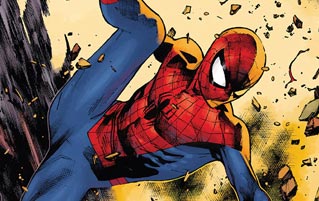
Superheroes are a universal concept: everyone can understand the commonplace idea of a flying man in yoga clothes who punches crime and somehow doesn't get paid. Still, the particulars of our favorite superheroes' stories can vary from country to country, sometimes due to cultural reasons, and sometimes because the person translating the comics is a maniac. Like when ...
Spider-Man's Girlfriend Didn't Die In Mexico
In 1973, Marvel published a two-part story called "The Night Gwen Stacy Died," featuring the death of a beautiful and beloved member of Spider-Man's supporting cast: the Green Goblin. Oh, and also Gwen Stacy, Spider-Man's girlfriend.
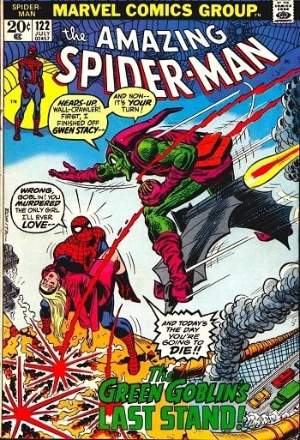
Gwen's death was mourned by fans everywhere ... except in Mexico. You see, Mexican fans had nothing to mourn, because in the comics published there, Gwen was still alive. You might be thinking that the translators simply recolored other characters like Mary Jane or J. Jonah Jameson to look like Gwen, but no. They actually produced all-new issues in which Gwen never died. And while they were at it, they also gave her a butt extension:
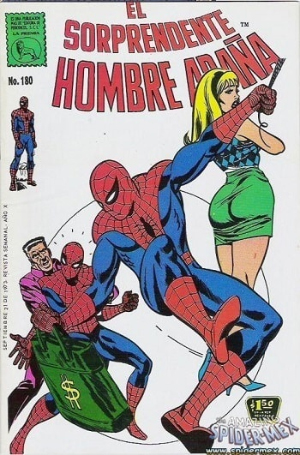
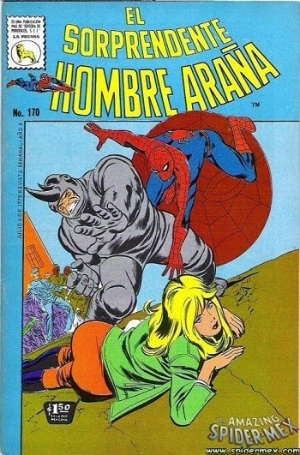
According to the artist who drew most of these issues, Jose Luis Duran, the Mexican publisher convinced Marvel to let them create their own Spider-Man comics by arguing that these were simply Peter Parker's dreams. After all, when a loved one dies it's normal to be haunted by dreams where they're still alive and have a much nicer butt. One issue even teased fans with the possibility of Peter marrying Gwen, though that turned out to be a dream sequence ... within the dream sequence (Gwen-ception?). It is also our duty to report that Aunt May is a total AILF in that issue.
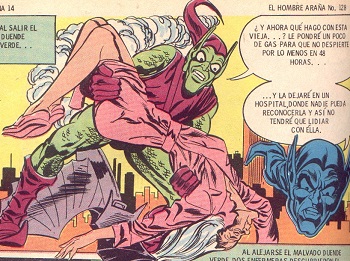
This parallel timeline went on for 44 issues, with some U.S. stories thrown in between, and that was the last the world saw of Spider-Mex and the Bootylicious Spider-Gwen. At least until Into The Spider-Verse 2 comes out and takes place entirely in Earth-Mexico.
The Flash Was Renamed "Flushman" In Argentina
It's not uncommon for superhero names to get translated in other countries: for instance, in Latin America, Spider-Man is "Hombre-Arana," Green Lantern is "Linterna Verde," and The Flash is ... Flush ... man? Flushman?!
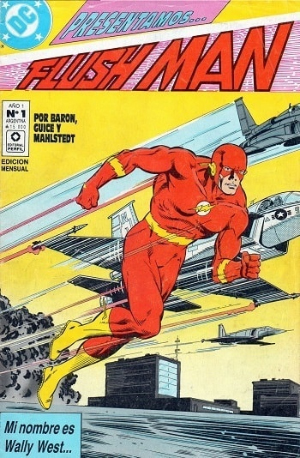
Flushman sounds like someone you'd call when your toilet tank is overflowing, not the fastest man alive. And yet, that's how Latin American readers knew the character in the '90s, after a publisher called Perfil scored the license to print DC comics in Argentina and neighboring countries. Among those comics was The Flash, but unfortunately, there was already an Argentinian gossip magazine called Flash. To avoid being sued (or simply having hurtful rumors printed about their persons), Perfil's editors decided to come up with a new name. After considering options like El Rayo ("The Ray") or El Relampago ("The Lightning"), they settled for Flashman, only to decide at the last moment that it was still too close to Flash. Hence: Flushman. The most logical solution.
Note that toilets make the same sound all over the world, so even in Argentina, "Flushman" still sounded like a poo-related superhero. Everyone hated it, including many of the people working on the comic. The translator claims he refused to type that stupid name in the scripts, to the editor's annoyance, which explains why the character was accidentally called "Flash" about once per issue.
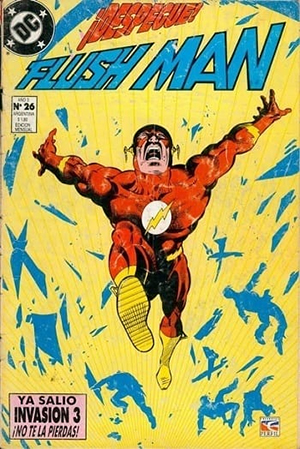
Unsurprisingly, Flushman was the publisher's worst-selling title, because what the hell is a Flushman. It also didn't help that Perfil's comics had amateurish lettering, a shockingly belligerent fan mail section (with editors commonly insulting readers), and seemed to be printed on toilet paper. At least that last part was consistent with the bathroom theme.
After exactly 49 issues of Flushman, Perfil lost the DC license and fired all their employees without any notice. Today, the company is much more successful publishing gossip, news, and T&A magazines. We're just sad we never got to see a crossover with The Whizzer.
Asterix Was A Fascist In Germany
Asterix is by far France's most popular comic book character, like Wolverine and Mickey Mouse rolled into one. Naturally, other countries wanted a piece of this action, and so in 1965 a man named Rolf Kauka acquired the rights to translate Asterix comics in Germany. He made a few adjustments, though: 1) Asterix and his friend Obelix were now called Siggi and Barabbas, 2) they were now ancient Germans instead of ancient Gauls, and 3) they were a little too much into Nazi apologism.
Remember, this was in the middle of the Cold War, when Germany was split up between West and East on account of the whole "they tried to take over the world" thing. Kauka wasn't a fan of either side, so he changed the comic to make fun of them. The dumb Roman imperialists occupying Asterix/Siggy's territory now inexplicably spoke English, while the brutish Goths used red letters to make it clear that they were commies.

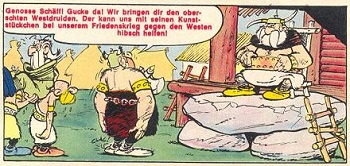
So if Kauka didn't like the Americans or the Soviets, who did he like? Well, let's just say he turned the villain of one story into a greedy Jewish stereotype straight out of 4chan. Also, in one comic, Kauka uses the big rock Obelix/Barabbas likes to lug around as a metaphor for a "guilt complex" that Germany should leave behind. Yeah, other than murdering millions of people, what did Germany have to feel guilty about?
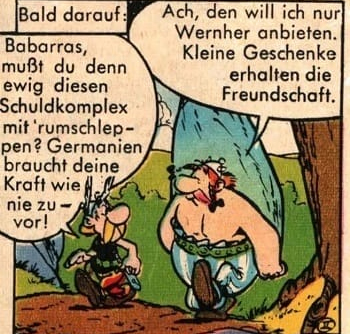
Some critics described the comic as "nationalist-fascist propaganda." That wasn't exactly what Asterix's original creators were going for, so they took away Kauka's license. Undeterred, Kauka started a thinly disguised Asterix and Obelix ripoff called Fritze Blitz und Dunnerkiel, but he soon removed the "thinly disguised" part and renamed it Siggi und Barabbas, exactly the same name as his now unauthorized translation. We're assuming he felt no guilt about that, either.
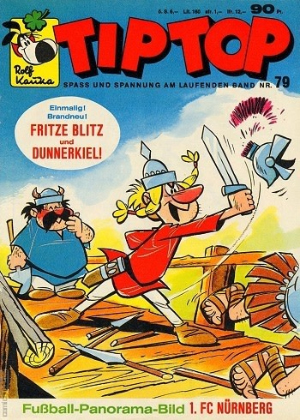
U.S. Anime Censorship Makes The Shows Even More Nonsensical
The U.S. and Japan share a love for superpowered people in colorful clothes but disagree on other subjects, like "Should children be aware of the existence of lesbians?" Japan is in the "yes" (or more likely "who cares") camp, which is why the anime show Sailor Moon included a lesbian couple, Sailor Uranus and Sailor Neptune. The company dubbing the show into English, scandalized by Uranus' "perversion," decided to change the characters into cousins in order to protect the youth of America.
Problem is, it's still extremely obvious in the show that these characters are horny for each other. In an attempt to avoid corrupting '90s kids by showing them a gay couple, the dubbers accidentally created an incestuous one ... which explains a lot about some of the most disturbingly popular online porn genres these days.
Sailor Moon also censored gay male characters by pretending they were flat-chested women. Something similar happened in the show Gatchaman, known in the U.S. as Battle Of The Planets, G-Force, or Eagle Riders, depending on how old/into obscure TV shows you are. The main villain, Berg Katse, has the ability to turn male or female. In order to "simplify" that, the original U.S. translators pretended that Katse's female form was a different woman in almost every episode -- sometimes Katse's sister, sometimes a trusted commander, and sometimes some totally unrelated lady, all of whom happened to look the same. Not confusing at all!
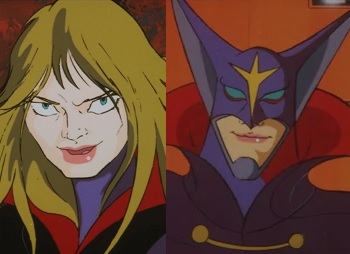
In other instances, the translators change characters' genders to make the shows more progressive. Many of the Japanese shows Power Rangers was cobbled together from only included one female team member. So, in the name of equality, the U.S. producers simply had a female actor dub a male characters' lines during the action scenes. In other words, no, that wasn't a roll of quarters Trini the Yellow Ranger was always carrying in her pants.

Shazam's Adventures Got Seriously Messed Up In England
Shazam! comics tell the wholesome story of a child who turns into a square-jawed hero called Captain Marvel after shouting the name of his favorite app. In the '50s, these comics were selling like gangbusters in England ... until they ran out. Turns out the company making Captain Marvel's adventures in the U.S. folded after being sued by DC for ripping off Superman (as if the entire superhero industry wasn't based on "ripping off Superman").
Trying to keep the gravy train going, the English publisher responded to this setback with more plagiarism of their own -- as in, they just hired someone to continue the series under a slightly different name. Captain Marvel became Marvelman, Captain Marvel Jr. became Young Marvelman, and Mary Marvel switched genders and became the paradoxically named Kid Marvelman (make up your minds, is he a kid or a man?).

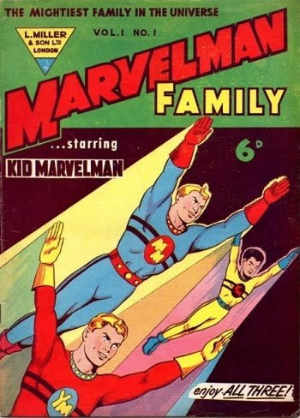
The villains were recycled too: the short, glasses-wearing Dr. Sivana was replaced by the short, glasses-wearing Dr. Gargunza, while Black Adam was upgraded to a nearly identical-looking character by the superior name of Young Nastyman. The publisher even continued the numbering of the old Captain Marvel comics and exported these ripoffs to other countries. They also remained faithful to the gee-whiz tone of the original stories ... until a young new writer called Alan Moore got involved, anyway.
In the '80s, Moore revived the dormant Marvelman franchise and immediately set about Alan Moore-ifying it. He revealed that the character's innocent childhood adventures were the product of brainwashing and filled his new ones with rape, gore, and child murder. One issue featured graphic close ups of a realistic childbirth. At this point, Marvel Comics took notice and said they wanted nothing to do with this, so they forced Moore's publisher to change the comic's name from Marvelman to Miracleman.
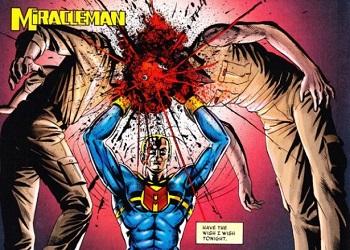
Ironically (as you may have deduced from the little words under the pictures above), Marvel now owns Miracleman after a long and confusing legal battle involving Spawn and Neil Gaiman. Considering Hollywood's hard-on for Moore adaptations, it's only a matter of time before the MCU introduces the character, which is great news for everyone who thought DC's Shazam! film needed more genocide and shots of the human birth canal.
Follow Maxwell Yezpitelok's heroic effort to read and comment every '90s Superman comic at Superman86to99.tumblr.com.